…click on the above link to read the rest of the article…
News and views on the coming collapse
Home » Posts tagged 'food' (Page 16)

Our world today would seem magical to our ancestors. Our needs are met almost immediately, we have clean water at the turn of a knob, heat at the push of a button, and light with the flip of a switch. Food is purchased in a box, ready to heat, and a person can prepare a meal in under 6 minutes using the microwave oven that’s a fixture in most modern kitchens.
Our world is clean, convenient, and loaded with abundant resources, things that took significant time and effort to produce in days gone by.
But all of this convenience comes at a high price, one we don’t even realize exists until a situation arises in which the ready answers aren’t there, the food is not available, and the dial on the thermostat no longer has any effect at all.
Modern life destroys survival instinct. Most folks just buy the answers to all of their problems and they have lost the ability to think. Self-reliance is an act of epic rebellion against the status quo.
Quick solutions reduce problem-solving ability
Yesterday, I discovered I was out of oregano.
Normally, I’d hop in the car and go to the grocery store. I’d buy some oregano, some other interesting things that caught my eye, and grab a coffee on the way home to fight that mid-afternoon crash.
But, since I’m participating in the Once-a-Month Shopping Challenge, running to the store was not an option, and wouldn’t be for 3 more weeks. Since the tomatoes I was processing wouldn’t last that long, I had to think about solutions – real solutions that did not involve running to the store. (I substituted thyme and basil, by the way.)
…click on the above link to read the rest of the article…
“There is one masterpiece, the hexagonal cell, that touches perfection. No living creature, not even man, has achieved, in the center of his sphere, what the bee has achieved in her own: and were some one from another world to descend and ask of the earth the most perfect creation of the logic of life, we should needs have to offer the humble comb of honey.” — Maurice Maeterlinck, The Life of the Bee, 1924.
What is the most important animal to humans? In prehistoric times, the dog helped transform early hunter-gatherers into apex predators. Later, human civilization was built on the backs of horses. But starting around 11,500 years ago, when humans began making permanent settlements and invented agriculture, bees emerged as the most critical animal to human survival.

By pollinating crops around the world, honeybees feed more than 7 billion people today. Most of the food that we eat (and all of our cotton) is produced in part by the hard work of bees. In her 2011 book The Beekeeper’s Lament, journalist Hannah Nordhaus described honeybees as “the glue that holds our agricultural system together.”
The importance of bees isn’t limited to humans, of course. By promoting the reproduction of angiosperms or flowering plants, bees are also central to survival of countless other animal species that rely on those plants and their fruits to survive. In fact, Earth’s entire planetary ecology has been shaped by bees. Since they first evolved from wasps some 100 million years ago, bees have driven the evolution of plant life.
Sadly, in recent times, we have not treated our bee friends well. The use of pesticides—neonicotinoids in particular, which are commonly used on corn, soybean, canola and cereal, as well as many fruits and vegetables—have killed an estimated 250 million bees in a just a few years.
…click on the above link to read the rest of the article…

Lots of preppers are convinced that they’re going to “live off the land” should the world as we know it come tumbling down around our ears. Seed banks are stockpiled, books are purchased, and people are confident that they’ll be able to outlive everyone else based on the sweat of their inexperienced brows.
But no matter how hard working you are, farming takes time. Time for learning, time for mistakes, and time for your plans to come to fruition. A prepper homestead is something that must be built over a period of time – it’s absolutely not a plug-and-play solution, regardless of the number of survival seed packets you have carefully stashed away. Farming for survival is not a good plan if you have never done it before.
If a prepper homestead is your survival plan, let me give you some advice: STORE. FOOD.
You are going to have to have something to get you through that first year when your farm doesn’t produce diddly squat.
As anyone who has followed this blog for a while knows, my family is prone to new adventures. We’ve moved from a large city to a cabin in the North Woods, where I discovered I knew nothing about building fires and living in the wilderness. We drove across the continent to move from Ontario, Canada, to the West Coast, where I had to rebuild my preps from the ground up, since US Customs would not allow us to bring our food supplies across.
This year’s adventure is food production. My daughter and I recently moved to a small farm, eager to polish up a new skill set and build that idealized prepper homestead that many of us dream about.
…click on the above link to read the rest of the article…

The reality has always been that it takes land to grow crops…no matter the type of crop. People need certain nutrients (protein, carbohydrate, roughage, and others) to thrive and all come from crops that are presently grown on arable land. The problem is that as the population increases, the amount of land available for crop production decreases. But, more people also mean the need to produce more food. It is a circular problem and it requires a solution.
Since land is needed to grow crops, it has been difficult to produce what is needed in urban areas. According to United Nations estimates 66% of the world’s population will live in urban areas by 2050. These people will need a means of producing some of their own food because more arable land will be used for housing.
Aquaponics is among the possible solutions to this problem.
WHAT IS AQUAPONICS?
The term is the portmanteau of “aquaculture” and “hydroponics”. Fish snails and various types of crustaceans have been farmed and harvested for many years. A farmer builds a small pond, introduces the animals and induces growth with proper nutrition. The ponds are naturally aerated and waste is disposed of via runoff. Hydroponics is a means of using water as a growth medium for plants rather than soil. When the two are combined, the waste products of the fish become plant food (with a little help from naturally occurring bacteria) and the plants serve to help aerate and filter water that is recirculated to the fish.
…click on the above link to read the rest of the article…
‘Food sovereignty’ is fast becoming a lost concept; the right to have the knowledge and resources to grow our own food is an essential right. If we don’t have access to nutrient dense organic food, then where do we get the essential energy to heal our body, mind and spirit certainly not from the supermarket where the average ‘fresh food’, in Australia food often travels more than 1000klms from farm to plate? The value of the ‘sprout jar’, the home garden, or locally grown organics is vastly underrated, these are some of the rare places where we get not just food that fills but food that heals.
Organics combined with living soils works to redefine ‘sustainable agriculture’ as: ‘Our ability to build fertility as we improve production and reduce input costs’
One of the major global demands we face today is the heavily depleted state of our soil. The past few decades have seen an unprecedented demand on natural resources from modern agriculture, and this demand has proven to be unsustainable. Modern agriculture is artificially stripping the soil of its long-term nutrients to such extremes that we are essentially eating our grandchildren’s food and leaving behind an agricultural wasteland as a primary burden for future generations.
Current modern agricultural practice is based on a military approach where the first response to imbalance in the productive system is to kill something. In a biological system our first response is to add life, so that ‘Nature can do what Nature does best’, create balance in our productive systems.
One of the primary ways to do this is through the production of specialist compost that is rich in plant nutrient and has a high diversity of beneficial soil microorganisms. This diversity and richness supports the balance and vitality of the growing system by empowering the natural processes rather than overriding them.
…click on the above link to read the rest of the article…
(Subscribe to World Policy Journal here)
From the Fall 2015 Issue “Food Fight“
PARIS—Nestled in a valley in the northern French countryside of Normandy, the Bec Hellouin farm, once the first permaculture farm in France, produces some 800 varieties of fruits and vegetables. In 2004, world travelers and teachers, Perrine and Charles Hervé-Gruyer, decided to turn their energies and talents to farming. Their acres of intensive polyculture fields, two greenhouses, two mandala gardens for growing vegetables, herbs, and flowers coexist with orchard-based agroforestry providing berries and fruits on this property. The farm landscape includes several ponds and a river, as well as Mérens horses, a hardy race from the Pyrenees; mini Shetland ponies; sheep from the island of Ouessant; donkeys from the Cotentin Peninsula near Cherbourg; pigs from Bayeux; and an innumerable assortment of rabbits, hens, geese, ducks, and guinea fowl.
But the real experiment that carries enormous promise for global, small-scale agriculture came over a three-year period ending last year. A garden area of a quarter acre was carved out and planted using the most advanced permaculture techniques. In a single year, this plot produced €52,000 ($57,200) worth of output for 1,400 hours of work, for an effective salary of €20 ($22) an hour. With this kind of output globally, there would be little or no threat of hunger no matter how rapidly the population of our planet expands. It raises many questions obviously, and one that especially concerns me—whether microfarming is a solution to the global food problem.
This experiment could seem esoteric, limited to a few insiders or lunatics, yet it is united by the deeper consciousness it reaches and the issues it addresses. The foundations, however, rest on some deeply involved individuals, each looking for answers and a method to tackle new issues. The answers, the methods they uncovered, have turned into deep convictions supported by their experiences and innovations.
…click on the above link to read the rest of the article…

Consider, for a moment, that lettuce leaf on your plate. It probably traveled a long way to get there—about 1,500 miles, on average.1 In fact, your dinner has probably seen more of the world than you have: the average American meal contains ingredients from at least five countries outside the United States.2
The complex, globalized system that puts food on our plates is a technical and logistical marvel, delivering unprecedented quantities of food at historically low prices.3,4
But that system is surprisingly fragile. Its globe-spanning supply chains are easily disrupted and its vast monocultures are vulnerable to drought and disease.5,6 And, because the system is entirely dependent on fossil fuels, it is subject to the shortages and price swings that afflict those commodities.7
New Yorkers got a firsthand look at the fragility of the food system when Superstorm Sandy pummeled the city in 2012. Days after the storm, trucks were still stranded on roadsides, unable to make deliveries. Some grocery stores saw their stocks destroyed by the storm surge; others lost power and trashed their perishable goods. Thanks to “just-in-time” supply chains that kept inventories to a minimum, shortages set in quickly.8 As a result, hungry New Yorkers stood in line for hours, waiting for emergency supplies of food and water.9
Most New Yorkers weathered those shortages, and a massive crisis was averted. Still, Sandy should serve as a wake-up call. In the era of climate change, our cities will face more monster storms, floods, and other extreme weather events.10 At the same time, a wide range of natural and human-made crises—from epidemics to terrorism—have the potential to bring our food system to its knees.11
In these turbulent times, we need to make our food supply systems more resilient. Producing and distributing food on the local level could help us weather disruptions of all kinds.
…click on the above link to read the rest of the article…
The above 70% increase in food production assumes that the western diet will spread to the Global South, with no reduction in consumption by the northern nations. 30-40% of cereals are presently fed to animals, which could rise to 50% if levels of meat and dairy consumption increase as predicted. It has been reckonedthat 3.5 billion additional people could be fed if all cereals were given over for human consumption.
…click on the above link to read the rest of the article…
It’s not always the most popular subject to broach within public and/or permaculture circles, but the fact of the matter is that in many, many recent studies dairy is being linked to several chronic illnesses, including cardiovascular issues, cancer, and digestive woes. It’s no wonder, really, as we are the only animal to regularly consume the milk of another, and the only that ingests milk (or milk products) into adulthood.
Of course, dairy has long been a part of the Western diet, and many of us cling desperately to things like cheese and yogurt or a splash of cream in our coffee. Truth be told, the majority of people who are devoted to dairy, especially those with animals specifically raised for milk, won’t soon be giving it up, but perhaps it’s time to start recognizing some of the healthy alternatives out there.
Even if a 100% dairy-free diet isn’t in the cards, knowing how to make all-natural dairy-free milk, cheese, and yogurt can’t hurt, and it provides a new multitude of flavors and dishes to bring to the self-sustainable table. The following recipes are healthy, homemade alternatives that use a variety of sources to create dairy-free “dairy” products. They are not an indictment of anything but simply a new way of looking at something familiar.
DAIRY-FREE MILK

What we are after can really aid in deciding what kind of milk will work best. Is it cream for coffee? A smoothie? Baking? Each base, everything from nuts to grains to legumes to coconuts, performs a little differently, just as the varying types of milk (skim, 2%, full fat, cream) operate differently. Essentially, though, whatever the foundation is, the same techniques apply: The base is ground into a powder and mixed with water, often with something to add a tinge of sweetness.
…click on the above link to read the rest of the article…
Years ago, I was reading the book Surviving the Apocalypse in the Suburbs. (Great book that I highly recommend!) The premise of the book is that our future economic woes will be based on the scarcity of oil.
The author, Wendy Brown, makes an excellent case regarding our dependency on oil, but the thing that really stood out in my mind was how she had changed her family’s diet well in advance of this economic crisis. She focused her efforts on local food for self-reliance in the long run.
She discussed at length the fact that on her suburban property, in her particular climate, there were things she could produce, and things she could not. Taking it a step further, there were many things that were not available within a 100 miles of her area. So why, she asked, would she want to base her family’s diet on foods that might not be readily available in the future? Why would she want her children to have to endure yet another drastic change should things all go to heck? Instead of rice, they focused on potatoes, for example, because that was realistic for a long-term diet in her location in rural Maine.
Eating locally means stepping away from the Standard American Diet
Eating locally is something we personally focus on. Of course, I also prep, and most of the preparedness calculators recommend things that don’t grow in any type of abundance in my area. And by “things” I mean hundreds of pounds of grains.
Several months ago we swore off grains as a family due to some health issues with my daughter, and we haven’t looked back. I think it’s entirely possible that many of the chronic health problems being experienced in our country could be related to the exceptionally high grain-and-carbohydrate intake of the average American.
…click on the above link to read the rest of the article…
 A joint task force of experts from the UK and US have recently released recommendations for Extreme Weather and Resilience of the Global Food System. The report uses current climate and weather science coupled with food supply history to make predictions and recommendations to help governments mitigate the societal consequences of food price shocks.
A joint task force of experts from the UK and US have recently released recommendations for Extreme Weather and Resilience of the Global Food System. The report uses current climate and weather science coupled with food supply history to make predictions and recommendations to help governments mitigate the societal consequences of food price shocks.
The release of this report is almost ominous in relevance. As drought-stricken Californians and Australians brace for what is shaping up to be one of the most severe El Nino weather weather events in recent history, Section 1 of the report states “[i]n 2007/8, a small weather-related production shock, coupled with historically low stock-to-use levels, led to rapid food price inflation…”. The source of the small weather-related production shock was El Nino conditions in 2007 that caused severe drought in Australia, reduced Australian wheat production by more than half, and exploded wheat prices around the globe.
As we prepare for more El Nino related extreme weather events, the report confirms that we are still at risk for “shocks” to our food supply and prices. In fact, they may be more common and more detrimental in the future. Additionally, the report suggests that if corrective action is not taken, the consequences could cause more civil unrest like the “Arab Spring” of 2010.
While policy makers are still trying to understand the issues, home growers intuitively know that extreme weather events impact food production. We’re not dealing in abstract ‘what-if’ scenarios and distant financial markets, we’re facing the realities of planning and planting our gardens in uncertain and extreme weather conditions right now. Like governments at the global level, home growers also need to meet the challenges through positive action rather than unprepared reaction. Surprisingly, the advice offered in this report also provides good guidelines for us. Let’s take a closer look at the recommendations and see how they can be applied to our home gardens.
…click on the above link to read the rest of the article…
Self-reliance boils down to taking control of what we can control and depending as little as possible on what we can’t control.
Self-reliance is a grand-sounding phrase, but what does it mean in real life?Does it mean total self-sufficiency?
To my way of thinking, even the most self-sufficient still rely on energy pulled out of the ground somewhere far away, grains grown far away and a host of goods manufactured far away.
For most of us, living in urban or suburban zones, self-reliance boils down to this:take control of what you can. We can’t control monetary policy or the shared infrastructure; we’re at the mercy of authorities at the top of highly centralized hierarchies.
But that doesn’t mean we have no control. We can control what we put in our mouths, what we do with our time and what we pursue with our minds.
The dynamic here is well-known: garbage in, garbage out. Garbage food in, garbage health out. Garbage financial planning in, garbage finances out. And so on.
As longtime readers know, we maintain a messy postage-stamp sized urban garden. Despite my lazy gardening style, the garden produces more vegetables than we can eat, so we share much of the yield. In summer, we only buy what we don’t grow: round onions, carrots, etc.
Here’s a few photos of this summer’s bounty.
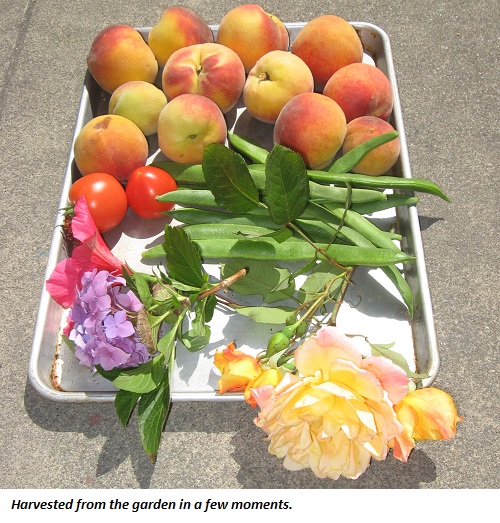
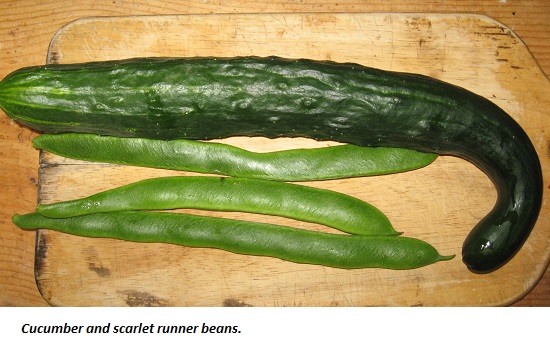
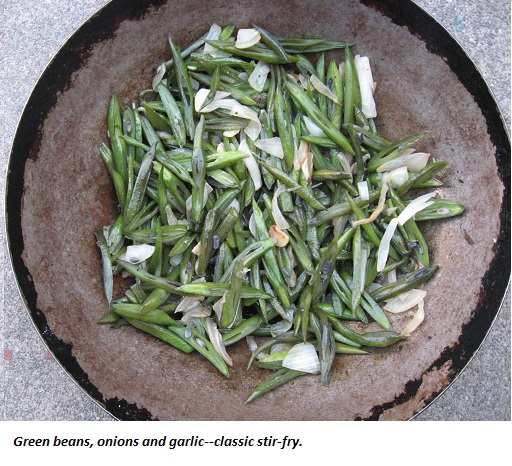
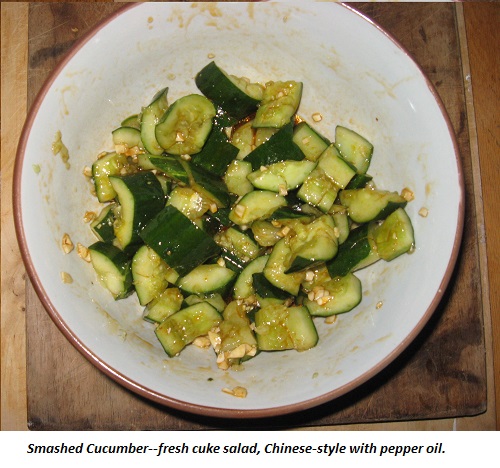
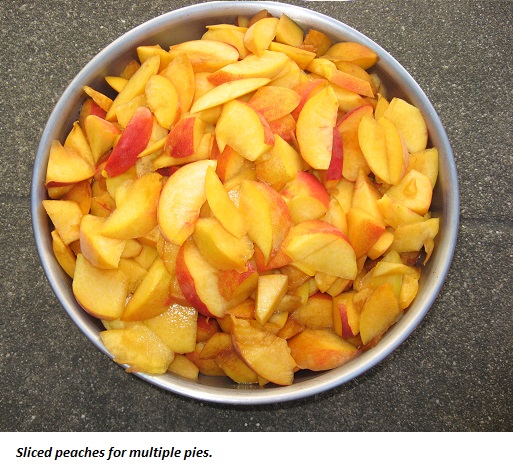
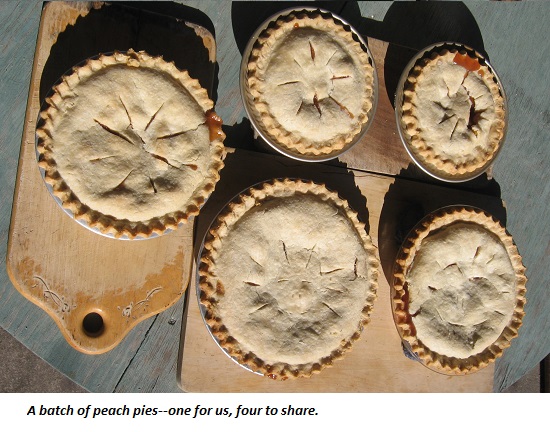
Fitness is like food: garbage in, garbage out. Any 6-foot/2-meter square of open space is a gym. You don’t need any weights, machines or special equipment. If you want this stuff, much of it is available used at a huge discount to the retail price. If the weather allows, a bicycle replaces many auto trips. Fitness does not have to be a separate activity–it can be part of everyday life.
…click on the above link to read the rest of the article…
In this day of paychecks that are stretched to the limit, it can be difficult to imagine taking on anything else that will cost money. Despite that, if you are interested in preparedness, you know that it’s wise to have a food supply on hand that will see you through a basic emergency.
I always recommend that you get started by planning for a two-week emergency. What kind of emergency, you may be asking?
Well, the best kind of prepping will be so versatile that it will see you through a personal financial issue, an extended power outage, or being confined to your home for a period of time due to a blizzard or civil unrest. None of these things makes you a “doomsday prepper” of the National Geographic variety. I’m not asking you to filter your pee and drink it. Just have the basics on hand to ride out a variety of situations in comfort.
One of the most frequent requests I get is for specific recommendations, so here’s a healthy emergency food list for beginning preppers.
Shopping for an emergency food supply isn’t like regular grocery shopping. Here are a few things to think about when planning your emergency food list.
Buy good quality food. While it’s easy to get sucked into the “something cheap is better than nothing” mentality, that’s not 100% true. It’s very important that you nourish yourself well during a crisis. This provides you with the energy you need to get through the emergency and it keeps you healthy. What could add more insult to injury than a lowered immune system allowing you to become sick during some sort of crisis? Focus on getting the best quality of food that you can afford.
…click on the above link to read the rest of the article…
Los Angeles, known for its extensive freeway system and broad boulevards, fast food, car culture, lawn-filled suburbs and smog, is getting serious about sustainability—and the effort includes local and sustainable food and agriculture.
When Los Angeles Mayor Eric Garcetti took office, he created a Mayor’s Office of Sustainability and appointed Matt Petersen as the city’s first chief sustainability officer. Now, Los Angeles has a comprehensive sustainabilitypLAn. Many factors, including water conservation, livable neighborhoods and waste management, naturally intersect with food and agriculture objectives.
“How can we improve our city today, and ensure future generations enjoy a place that is environmentally healthy, economically prosperous, and equitable in opportunity for all?” asked Garcetti in the pLAn’s introduction. “It is important to emphasize that the pLAn is not just an environmental vision—by addressing the environment, economy, and equity together, we will move toward a truly sustainable future.”
In a city that used to be home to many orange groves and other farming operations, agriculture will have a strong role in the city’s sustainability resurgence. Los Angeles will make land at its public facilities (including the Los Angeles Public Library) available for urban agriculture as well as convert unused lots to gardening spots. Future plans include a pilot hydroponics and aquaponics program.
The pLAn aims to encourage Los Angeles residents to purchase locally-grown food from farmers’ markets, and another one of the city’s objectives is to support a Good Food Purchasing Program to assist institutions such as hospitals and universities in sourcing locally grown fruits and vegetables. Other goals include expanding urban agriculture in the city’s Promise Zone (this land is federally designated) and spurring more urban farming efforts through the city compost giveaway program.
…click on the above link to read the rest of the article…
Many said province could withstand economic blows from oil and gas, but there are troubling signs
When crude oil prices began to plummet, economists comforted Saskatchewan residents that their diversified economy would safeguard them during the oil and gas slump.
In fact, Saskatchewan’s economy isn’t that diverse.
The province relies heavily on natural resources: fuel, food and fertilizer.

The Canadian Association of Oil Drilling Contractors forecasts it will drill half as many wells in 2015 compared to 2014.
And while economists were banking on the agriculture and potash industries to offset energy losses, they’re no longer confident that will happen.
The potash industry remains strong in production, on par with its growth last year, but nitrogen prices have fallen about $60 US a tonne.
Most worrisome, it’s shaping up to be a disappointing crop year for many Saskatchewan farmers, thanks to an unwelcome mixture of spring frost, drought and poorly timed rains.
While cattle prices remain high, drought has jeopardized hay yields and could force some ranchers to sell off their herd.
The Bank of Montreal has already downgraded its growth projection for Saskatchewan this year from one per cent to half a per cent.
“It’s disappointing,” chief economist at the Bank of Montreal, Douglas Porter, said. “The likelihood of a pretty tough crop this year further dims the outlook for western Canada.”
The Royal Bank of Canada told CBC News it expects to downgrade its growth projection next month as well.
Premier Brad Wall says he’s still confident the province can overcome economic pressures, and points to his government’s four-year plan to spend $5.8 billion on infrastructure.
Still, there are already red flags for the economy. Here are five signs of trouble:
The honeymoon is over for Saskatchewan’s housing boom.
The Canadian Real Estate Association predicts house sales in Saskatchewan will decline by nearly 13 per cent this year.
…click on the above link to read the rest of the article…